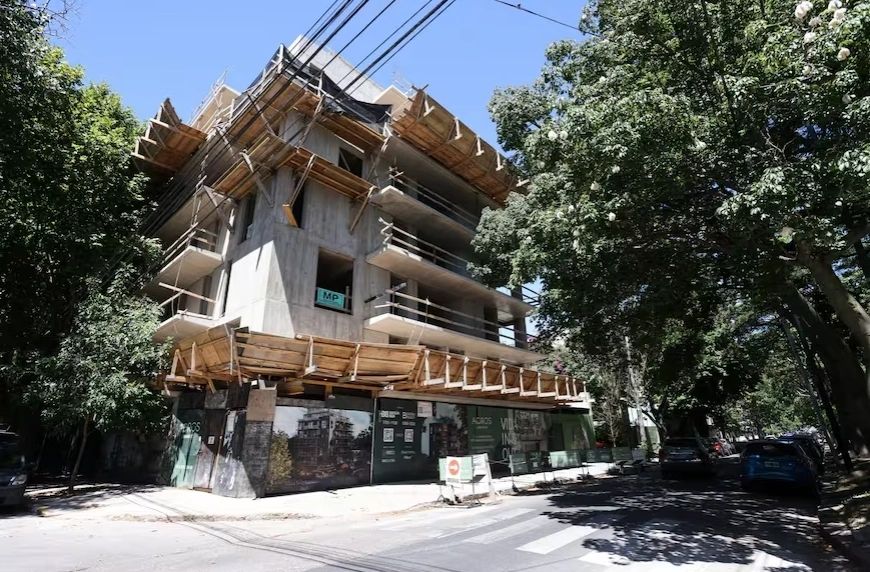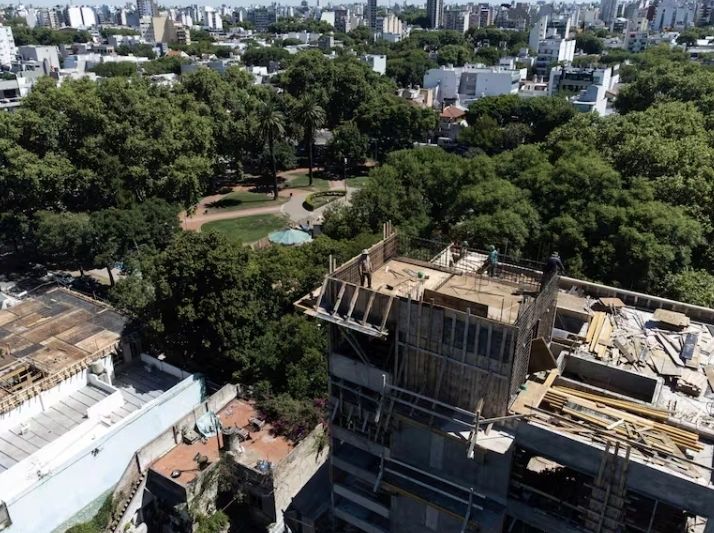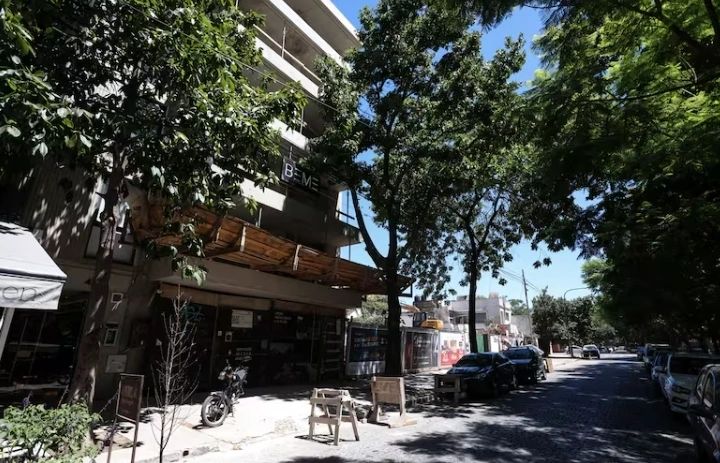BuySellBA
Administrator
Mortgage loans: The government regulated divisible mortgages for properties under construction - La Nacion Propiedades

Source:

 www.lanacion.com.ar
www.lanacion.com.ar
July 20, 2025
The fine print of the new measure, which already has its regulations and promises a positive change in the real estate market, allowing access to housing from the initial stage of construction.
By Maria Josefina Lanzi

Mortgage loans for properties under construction: the government regulated divisible mortgages. Gonzalo Colini
Eight months after divisible mortgages for development projects were introduced, the government finally regulated the implementation of these loans. This is a very positive development for the market, as these loans are designed to finance the purchase of properties under construction or land, something that was practically nonexistent in the Argentine real estate sector.
Joint Resolution 2/2025 of the Ministries of Economy and Justice, published yesterday in the Official Gazette, provides that "divisible mortgages may be established on properties subject to real estate projects for subsequent division and allocation to the horizontal property regime or real estate complexes, or for subdivisions originating from common-ownership plots."
In other words, as reported on the government's official website, the measure now allows " anyone to access a long-term loan to finance the purchase of a real estate development under construction (commonly known as a "pozo") or a lot in a neighborhood , even before the land is subdivided." They assure that the conditions will be the same as those of a finished property, thus facilitating access to housing from the early stages of a project.
In this way, a developer can establish a general mortgage on the land or the entire project, the buyers will start paying for their apartment during the construction and, then, when the construction is completed and the units are divided, that mortgage is also divided , assigning the corresponding balance to each buyer (based on the property they acquired and the balance they have pending payment), and they become the individual debtor to the bank.

The resolution is a very positive measure for the sector. Gonzalo Colini
This is a very positive measure for the sector, since, until now, almost all of the loans offered by banks have been for used properties. Brand- new units, unless they are ready for deed registration, cannot be purchased with a mortgage loan , as can properties in progress (those not yet built). It should be noted that new apartments, from the moment they are completed until they are deeded, go through a process that takes between six months and a year in Buenos Aires City, and a year and a half to two years in the provinces. The point is that, since a mortgage loan requires the property as collateral —that it can be mortgaged and be ready for deed registration—virtually all of the loans offered by banks with financing of more than 20 years are generally intended for the purchase of used apartments.
This situation is set to change, as buyers will now have the opportunity to access financing to purchase a home that doesn't yet exist, one that's under construction, or even land. According to the government's official website, the measure seeks to "promote credit, boost the sector and construction, and reduce the housing shortage in Argentina."
Furthermore, it boosts both buyers and developers, who will have financing to purchase a property (for the former) and advance their real estate projects (for the latter). "It's a very positive measure for the sector, since, with the regulations, developers now have the requirements to implement this tool and banks can now begin offering this financing ," says economist Federico González Rouco of Empiria Consultores. He adds: "For developers, it allows them access to disbursements as the project progresses and a loan portfolio begins to be built, which can then be sold on the market and used to lend again."

It will be possible to obtain financing to access a home that does not yet exist, that is under construction or in progress, or even to purchase land.Gonzalo Colini
Now that the regulations are in place, it remains to be seen whether banks will implement this measure, as they were awaiting the requirements. Issel Kiperszmid, founder of the Chamber of Urban Developers (CEDU), which represents 140 companies in the sector , highlighted the work CEDU has done to implement this resolution and acknowledged that the banks now need to adopt it.
In that sense, he acknowledged the difficulties that will exist: "Interest rates have virtually more than doubled since they began granting mortgage loans until today, a reality that clearly shows that banks do not have the long-term funding for these operations ," Kiperszmid explained, adding: "That is why the government should kick-start the creation of a capital market so that banks can unload these mortgages."
Rouco believes that, in addition to the fact that banks lack funding (a point that is not as complicated in this case, since these are mortgages that require less funding than a mortgage loan, given that, in general, the loan is disbursed in stages), the question is "whether or not banks want to be part of the process of providing this type of financing , since in the purchase of a mortgage loan, an apartment is used as collateral; in this case, the real estate project can fail, and there are more parties involved in the process (all the buyers of the apartments in a building, for example), so it is a model that carries more risk."
THE MOST PROFITABLE REAL ESTATE INVESTMENT IS REVEALED: IT LEAVES UP TO 12% IN DOLLARS
“This is very positive news for the sector. Beyond the positive news, we're taking it with caution. We understand that banks now need to make progress in developing a product to understand what type of developers they can offer it to, since the relationship is first established between the bank and the developer and, subsequently, with the end customers,” shares Alan Flexer, Development & Residential Manager at Narvaez.
"This represents a significant shift ," says Bernardo Mihura de Estrada, director of the Real Estate Registry (RPI) of the Federal Capital, which is part of the Ministry of Justice. "Previously, those who purchased a property under construction could only obtain financing through the developer. With this regulation, buyers can take out a bank loan with a real estate guarantee on a future unit, thanks to the divisible mortgage and the registration of tickets , which facilitates the entry of more financial players into the system."
According to the resolution, a divisible mortgage will be allowed to be created for domains that:
“The Civil and Commercial Code already approved, through Article 1170, the possibility of registering bills of sale. What this regulation stipulates is that to register bills of sale receipts for planned units, the "project registration" must first be registered in the Real Estate Registry. After that, the developer may register their bills in any registry authorized for this purpose, that is, the Real Estate Registry itself or any registries created in the future within the jurisdiction of the National Securities Commission,” explained Mihura de Estrada.
It's worth clarifying that these tickets will also expire after five years if not renewed before then, to prevent the system from dragging on without registration.
The regulations also govern mortgages on real estate surface rights , a mechanism that allows construction on land or part of it without being the owner and using that right to build as mortgage collateral (the surface owner). "The new feature is that, upon completion of construction by the surface owner, the compensation owed by the bare owner to the surface owner may consist of the transfer of full and perfect ownership of the units built by the surface owner. This could be key for different types of projects, especially those where the state is providing the land," notes Mihura de Estrada, who believes this tool will be useful for both public and private projects.
www.buysellba.com
Source:
Créditos hipotecarios: el Gobierno reglamentó las hipotecas divisibles para propiedades en construcción
La letra chica de la nueva medida que ya tiene su reglamentación y que promete un cambio positivo en el mercado inmobiliario para poder acceder a una vivienda desde su primera etapa de obra
July 20, 2025
The fine print of the new measure, which already has its regulations and promises a positive change in the real estate market, allowing access to housing from the initial stage of construction.
By Maria Josefina Lanzi

Mortgage loans for properties under construction: the government regulated divisible mortgages. Gonzalo Colini
Eight months after divisible mortgages for development projects were introduced, the government finally regulated the implementation of these loans. This is a very positive development for the market, as these loans are designed to finance the purchase of properties under construction or land, something that was practically nonexistent in the Argentine real estate sector.
Joint Resolution 2/2025 of the Ministries of Economy and Justice, published yesterday in the Official Gazette, provides that "divisible mortgages may be established on properties subject to real estate projects for subsequent division and allocation to the horizontal property regime or real estate complexes, or for subdivisions originating from common-ownership plots."
In other words, as reported on the government's official website, the measure now allows " anyone to access a long-term loan to finance the purchase of a real estate development under construction (commonly known as a "pozo") or a lot in a neighborhood , even before the land is subdivided." They assure that the conditions will be the same as those of a finished property, thus facilitating access to housing from the early stages of a project.
In this way, a developer can establish a general mortgage on the land or the entire project, the buyers will start paying for their apartment during the construction and, then, when the construction is completed and the units are divided, that mortgage is also divided , assigning the corresponding balance to each buyer (based on the property they acquired and the balance they have pending payment), and they become the individual debtor to the bank.

The resolution is a very positive measure for the sector. Gonzalo Colini
This is a very positive measure for the sector, since, until now, almost all of the loans offered by banks have been for used properties. Brand- new units, unless they are ready for deed registration, cannot be purchased with a mortgage loan , as can properties in progress (those not yet built). It should be noted that new apartments, from the moment they are completed until they are deeded, go through a process that takes between six months and a year in Buenos Aires City, and a year and a half to two years in the provinces. The point is that, since a mortgage loan requires the property as collateral —that it can be mortgaged and be ready for deed registration—virtually all of the loans offered by banks with financing of more than 20 years are generally intended for the purchase of used apartments.
This situation is set to change, as buyers will now have the opportunity to access financing to purchase a home that doesn't yet exist, one that's under construction, or even land. According to the government's official website, the measure seeks to "promote credit, boost the sector and construction, and reduce the housing shortage in Argentina."
Furthermore, it boosts both buyers and developers, who will have financing to purchase a property (for the former) and advance their real estate projects (for the latter). "It's a very positive measure for the sector, since, with the regulations, developers now have the requirements to implement this tool and banks can now begin offering this financing ," says economist Federico González Rouco of Empiria Consultores. He adds: "For developers, it allows them access to disbursements as the project progresses and a loan portfolio begins to be built, which can then be sold on the market and used to lend again."

It will be possible to obtain financing to access a home that does not yet exist, that is under construction or in progress, or even to purchase land.Gonzalo Colini
Now that the regulations are in place, it remains to be seen whether banks will implement this measure, as they were awaiting the requirements. Issel Kiperszmid, founder of the Chamber of Urban Developers (CEDU), which represents 140 companies in the sector , highlighted the work CEDU has done to implement this resolution and acknowledged that the banks now need to adopt it.
In that sense, he acknowledged the difficulties that will exist: "Interest rates have virtually more than doubled since they began granting mortgage loans until today, a reality that clearly shows that banks do not have the long-term funding for these operations ," Kiperszmid explained, adding: "That is why the government should kick-start the creation of a capital market so that banks can unload these mortgages."
Rouco believes that, in addition to the fact that banks lack funding (a point that is not as complicated in this case, since these are mortgages that require less funding than a mortgage loan, given that, in general, the loan is disbursed in stages), the question is "whether or not banks want to be part of the process of providing this type of financing , since in the purchase of a mortgage loan, an apartment is used as collateral; in this case, the real estate project can fail, and there are more parties involved in the process (all the buyers of the apartments in a building, for example), so it is a model that carries more risk."
THE MOST PROFITABLE REAL ESTATE INVESTMENT IS REVEALED: IT LEAVES UP TO 12% IN DOLLARS
“This is very positive news for the sector. Beyond the positive news, we're taking it with caution. We understand that banks now need to make progress in developing a product to understand what type of developers they can offer it to, since the relationship is first established between the bank and the developer and, subsequently, with the end customers,” shares Alan Flexer, Development & Residential Manager at Narvaez.
"This represents a significant shift ," says Bernardo Mihura de Estrada, director of the Real Estate Registry (RPI) of the Federal Capital, which is part of the Ministry of Justice. "Previously, those who purchased a property under construction could only obtain financing through the developer. With this regulation, buyers can take out a bank loan with a real estate guarantee on a future unit, thanks to the divisible mortgage and the registration of tickets , which facilitates the entry of more financial players into the system."
How do divisible mortgages work?
Kiperszmid explains that the regulations detail how the subdivision should be carried out, when the original debtor is released, the documentation that must be submitted, among other things. Santiago Vitali, a financial consultant for real estate developers, explains the step-by-step process:- A preliminary structuring process is carried out, in which the developer establishes a trust or a special-purpose limited company. The land is then deeded to the legal entity, and a construction plan is drawn up, dividing it into future PHs or specific functional units.
- A divisible mortgage loan is requested: the developer applies for a loan from the bank (a bridge or intermediate loan) secured by a mortgage on the land and, progressively, on each unit . The loan can be granted in installments against certified progress.
- Division scheme: As the units are individualized (through co-ownership regulations or the progress of the PH plan), the mortgage is subdivided into guarantees on each unit. This allows for the release of specific units (through partial cancellations) or the transfer of debt to other units not yet sold.
- Once the project is completed, the buyer has the option of paying off the debt in a single payment or taking out a mortgage loan with the bank and repaying the remaining amount due on the property.
According to the resolution, a divisible mortgage will be allowed to be created for domains that:
- are free of liens or recognized by the creditor
- have an urban development project that determines the subdivision modality
- and its articles of incorporation provide for the parties' agreement to divide the loan and the mortgage guarantee. Along these lines, the parties may authorize their transfer, securitization, integration into financial trusts, and issuance of mortgage bonds in accordance with current legislation and applicable regulations. The latter is very important, as it could allow these loans to be placed on the capital market for sale and provide greater liquidity to banks, which, in turn, will be able to continue lending.
What else does the measure enable?
Mihura de Estrada explains that another key innovation implemented by this measure is the registration of bills of sale , a tool that protects buyers who do not yet have a property title but have already paid part of the price for a unit. The new system allows these bills to be registered in the Real Estate Registry or in private entities authorized by the National Securities Commission (CNV) .“The Civil and Commercial Code already approved, through Article 1170, the possibility of registering bills of sale. What this regulation stipulates is that to register bills of sale receipts for planned units, the "project registration" must first be registered in the Real Estate Registry. After that, the developer may register their bills in any registry authorized for this purpose, that is, the Real Estate Registry itself or any registries created in the future within the jurisdiction of the National Securities Commission,” explained Mihura de Estrada.
It's worth clarifying that these tickets will also expire after five years if not renewed before then, to prevent the system from dragging on without registration.
The regulations also govern mortgages on real estate surface rights , a mechanism that allows construction on land or part of it without being the owner and using that right to build as mortgage collateral (the surface owner). "The new feature is that, upon completion of construction by the surface owner, the compensation owed by the bare owner to the surface owner may consist of the transfer of full and perfect ownership of the units built by the surface owner. This could be key for different types of projects, especially those where the state is providing the land," notes Mihura de Estrada, who believes this tool will be useful for both public and private projects.
www.buysellba.com

